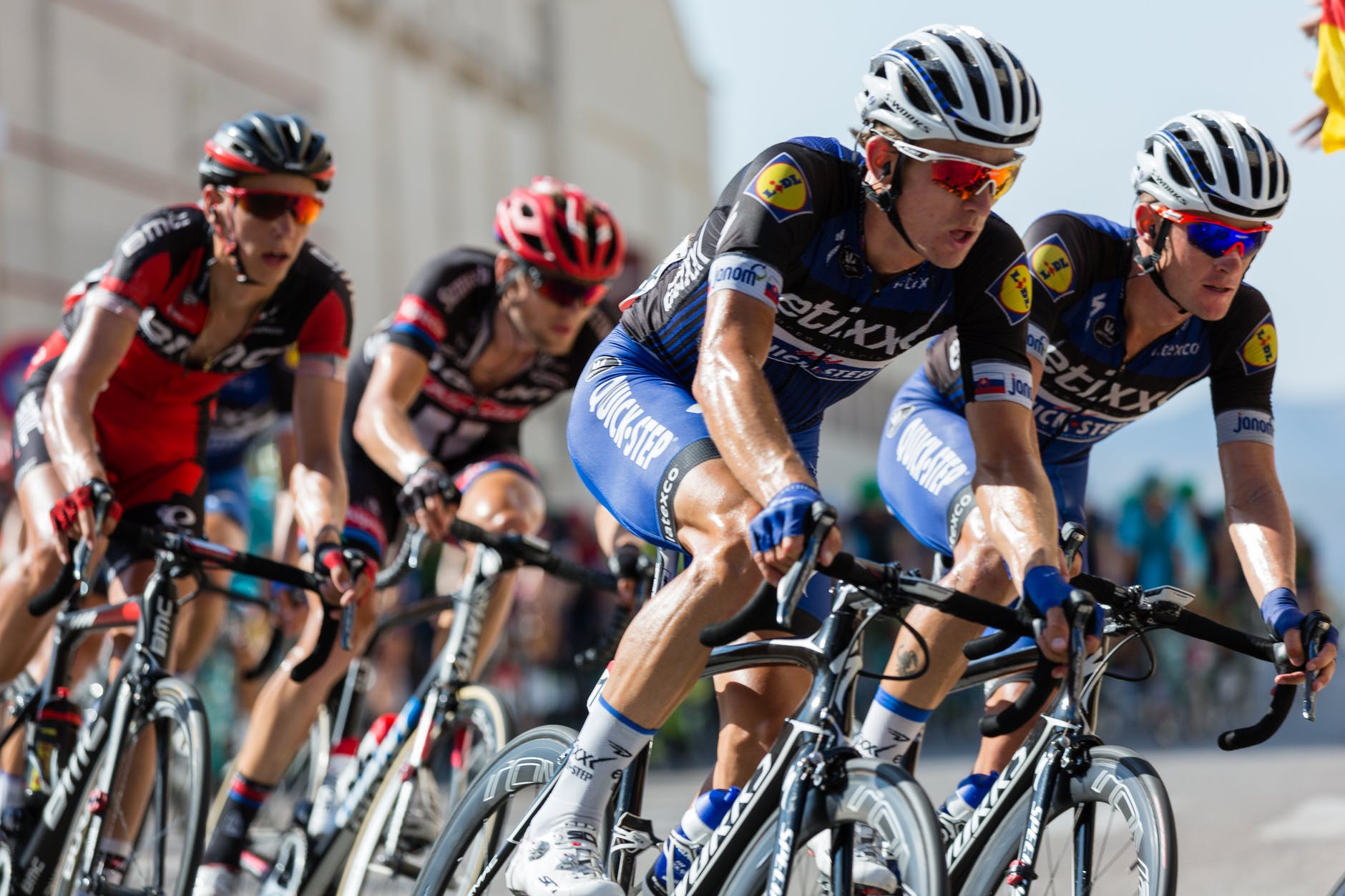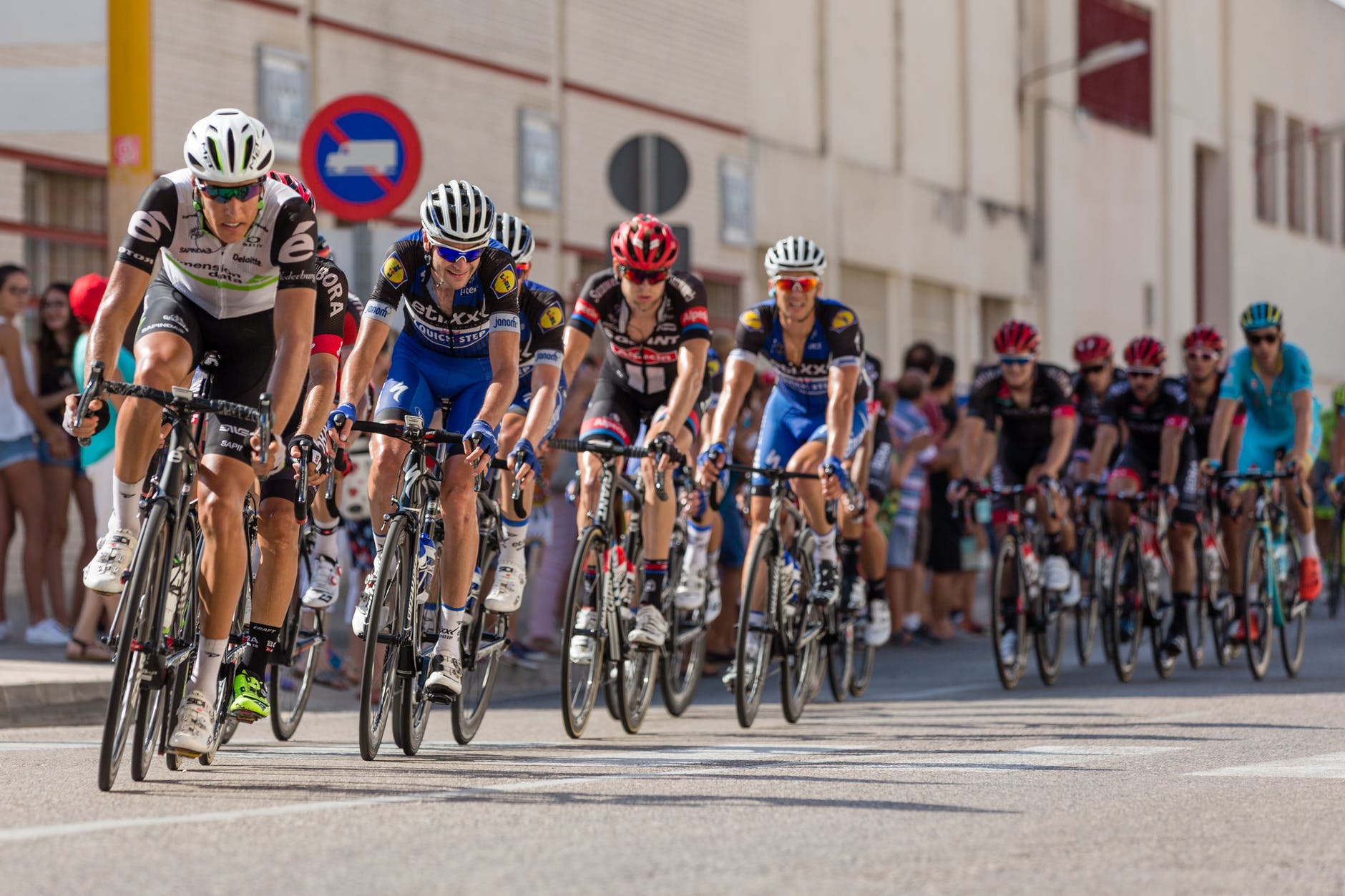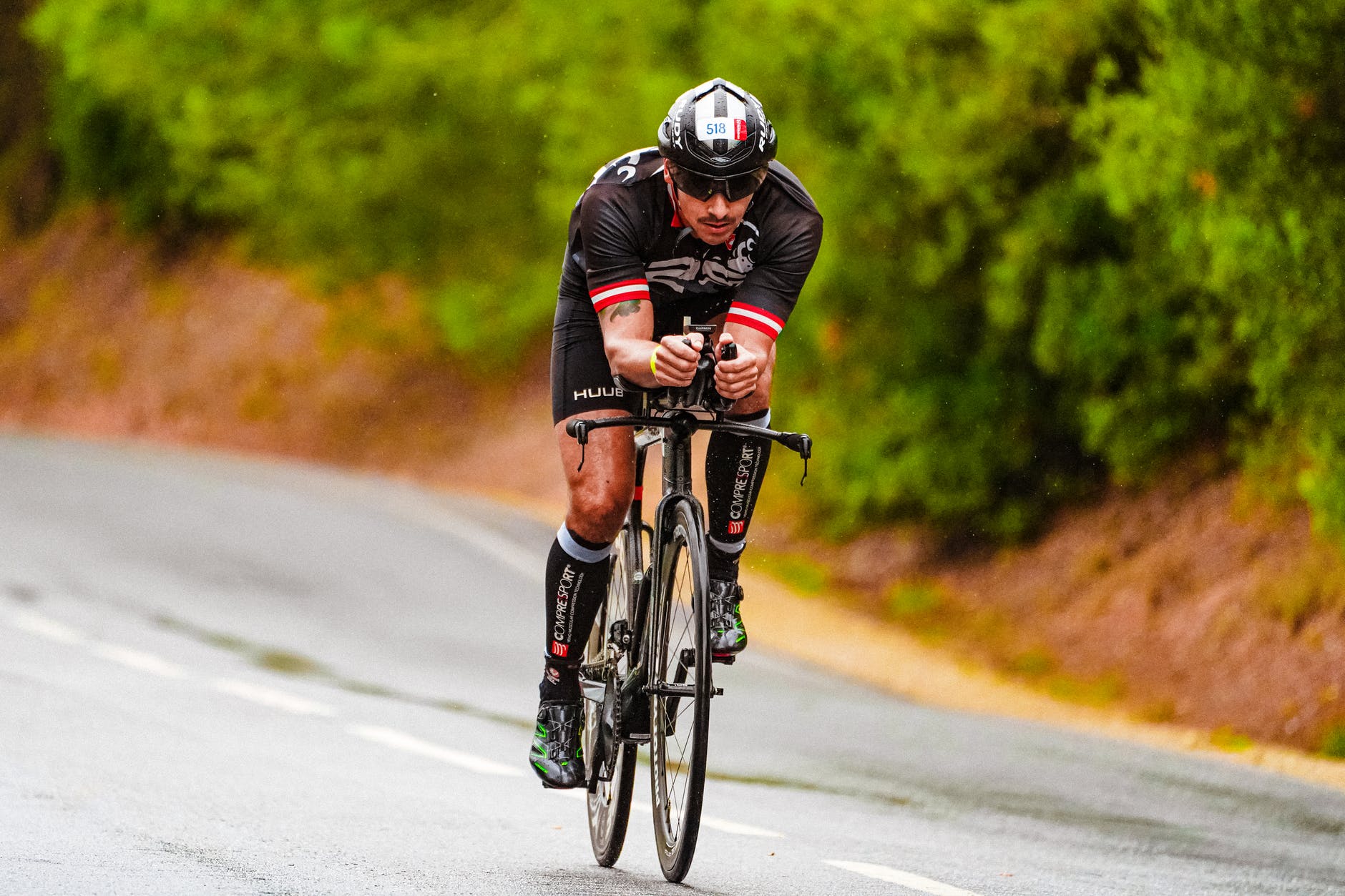Here are some tips to help you improve your cycling speed. Let’s talk about that.
1 curve your elbow
The biggest thing that slows you down when you ride a bike is wind resistance. Many of these tips express concern about your front part and ways to reduce your tension so you can slice more easily through the air.
The easiest way is to lower your body position slightly on the bike. Instead of sitting up straight in the saddle and catching a lot of air, try bending and lowering your body with your elbows close to the bars. You will immediately feel a difference.

2 Listen to the song
This is complicated because here at Cycling Weekly we think you need all your senses to ride safely and riding with music reduces your ability to hear the traffic around you. However, the National Bicycle Training Standards actually recommend trying it in the past, so that you are aware of the need to check your shoulders at frequent breaks – something that riders think they can hear when they hear the car. There are also several headphone brands out there that promise to let outside sounds in as well.
Aside from safety, there is plenty of research that shows that listening to fast-paced, improved music reduces the level of effort you feel. It can reduce our perception of effort by up to 10 percent,” said Dr. Costas Caraorgis, a researcher in sports psychology.
You will pedal hard without even noticing. Using music that beats like the best cycling cadence will help you paddle faster if you can match your cadence to the rhythm.
If you don’t want to plug in while on the road, you can do it while cycling indoors – and take advantage of the benefits through a few structured training sessions.
3 Ride with others
You may consider this a hoax but riding with other people will increase your average speed in different ways. First, if you turn it around to ride forward and share the task of cutting through the air, you will travel faster as a team than yourself. Riding with others will encourage you to increase your level of effort, trying to keep up with someone a little faster than you will help increase your average not only that ride but also help build your fitness for future rides. another article is How Fast Does a mountain bike go.
Have a sport with our sister company, UK Cycling Events. Way-marking, feed stations, mechanical support, and motivation of others around you. See events here.
4 Pump up your tires
Properly inflated tires will roll quickly. You should check your tire pressure before each ride as temperature changes and slight gusts of wind can mean that they soften without necessarily puncturing. Check the side wall of your tire for the recommended pressure. Invest in a track pump so you can easily get the pressure you need, a mini-pump is only kept on the road for emergencies.
5 brake less
Ride fast with fewer brakes
Peter Sagan proves that at high speeds, the position is more important than power (Credit: Sunada)
This is how for an obvious one. Try to break less. Braking slows you down and you need to pedal harder to back up at speed. Unnecessary braking energy and speed dissipation. So how do you improve? Try to eliminate ‘comfort’ braking first. It happens when you take a fast road or cross a descent and you start to go a little faster than you used to.
How to use your brakes properly
It is good to brake to reduce your speed to a level where you feel comfortable but first look around, if the road surface is good, unobstructed, and relatively straight then there is no reason to slow down so let the bike turn and enjoy some free speed. Braking later will help you maintain your speed for longer. Always remember to break in a straight line so that you are in a comfortable cornering motion before you start turning.

Ride on 6 drops
If you were riding a drop-handle bar sports bike, how often would you use drops? Chances are not very high but getting down will improve your bike handling, reduce your aerodynamic drag and help you corner and get off with confidence. Riding in drops reduces wind resistance by 20 percent compared to climbing on tops. another article How to assemble a bike in 12 steps.
There are two main things that stop people from riding in drops – not being able to reach the brakes and not feeling comfortable. These two issues can be solved with a bike setup. You may need to do some stretching because a tight hamstring and a flexible bottom back make it harder.
7 track stands
You may have seen other passengers and bike couriers balance the traffic lights, seemingly effortlessly, as though they were just demonstrating their superhuman bike skills. However, there is much more to this small strategy than showboating. They will keep three or four good strokes while you are still shaking for your paddles and will already be in motion and away. Track standing practice is required and it is not advisable to do it in front of the van driver during the Monday morning rush hour. When you stop for a meal or wait for your partner, start playing with the strategy.
Find a slight inclination to learn it, the gradient helps you find your balance points. If you usually do clipped rides then go-to trainers for confidence. Start climbing really slowly in tight circles. This will help you understand how to balance your weight. Go as slowly and firmly as possible and try to use smooth movements.
When you feel comfortable, stop slowly, pointing at your wheel. Keep your head up without looking at the front hub. Choose a place and focus your eyes on that place. Now, with your lead foot – which is at the front (feet three and nine), turn the wheel (about 45 °) to turn so that there is enough pressure on your lead food to maintain your balance, but not enough. Move the turn up. In another article Best Bike Seat For Hemorrhoids.
Using the same ratcheting technique you have assigned to climb the circles, relax the pressure a bit so that the wheel moves backward, it is applied again and it rolls forward. With that little cradle speed back and forth, you can keep the balance. Initially, when you are stopped you can cheat by holding a lamp post or railing. Remember to start pedaling a little before you let go so that you have speed, otherwise you can just pass by!
8 Ride on the headwind and go home on the tailwind
If you are not a sailor as well as a cyclist, you may not be able to direct the wind on a daily basis, but the wind can be both your friend and your enemy. Riding a headwind can feel like a struggle, no matter how hard you try, you can feel slow. A tailwind makes you feel like a superhero because you can easily spin at maximum speed
How to ride a bike in the air
Use the air when planning your route so that when you are refreshed the outside is in the headwind and when you feel tired on the side of the house there is a tailwind.
9 Weight loss
If you want to go a little faster, losing some weight will make a big difference. Weight loss will be followed by fatigue and constant tiredness. Less weight will obviously help you climb because you have less to move against the gravity ball. Similarly, weight loss will help you to make a small hole in the air and reduce the tension you experience while cycling flat.
>>> The importance of power-to-weight, and how you can improve
You don’t have to be obsessed with diet or training to lose enough weight to feel the difference. Not having one teaspoon of sugar in your tea three or four times a day is enough to lose 0.5 pounds of fat a month. An extra 30 minutes of riding, three times per week will enable you to lose as little as 1lb per month.
10 intervals
Quick cycle with breaks
Complete small efforts to get faster in the long run
(Image credit: Daniel Gold)
The fastest way to increase your average speed is to train at speeds above that. Obviously, you can’t get out faster than usual and ride on your normal route, you’ll start to get hurt faster or run out of energy. Instead, coaches recommend break training. This allows you to cycle for smaller explosions at speeds higher than your normal average speed and then slow down and recover before going fast again.
You can try this technique during any ride; No need to save it for strictly set ‘training sessions’. Fartlek training is designed by a Swedish coach and basically means playing with speed. You can choose to ride as fast as you can to the end of the road and recover until you cross five lampposts before going fast again. Use any marker you like from your environment; Parked cars, road signs, gateways. Pick your goal and paddle hard until you reach it, then relax. Make sure the road is safe and keep your head up to identify any danger no matter how hard you try – or try session cycling indoors where you can concentrate on the effort alone.
>>> Cycling training plan: Get fitter, ride faster and go further
If you want a more structured session, give it a try. If we assume that you typically go flat at an average speed of 14mph, then ride for 15-20 minutes to warm up before you find a reasonably flat stretched road. When you ride there for two minutes at a speed of 16mph. Choose a tight gear and maintain the same cadence without trying to run fast.
After pedaling hard for two minutes, change back to your easy gear, slow down and make it easy for five minutes – but keep your feet pedaling, it helps with the recovery process. Then repeat this whole ‘interval’ process three or four more times. Next time if it seems too easy, aim to go 3, 4, or 5mph faster than you normally would at a distance.
After a few trips, you will know what works for you. Your average speed for these rides may be lower than your ‘normal’ average speed. No problem, since it’s not a challenge. The challenge is to slowly get you and your feet accustomed to cycling at 16mph instead of 14mph.
Build 11 muscles
You can gain strength through specific gym training – but building your cycling muscles and developing your skills as a bike rider takes a long time, there is no substitute for time on the bike to improve cycling fitness.
If you ride regularly, your average speed will gradually increase and you will feel comfortable running that distance. However, there are some exercises that you can practice while riding a bike to speed up your development and help establish good techniques and build some cycling muscles.
Rapid cycles by building muscle
You can build muscle on or off the bike
Fast pedaling is more dependent on your cardiovascular system than slow pedaling in heavy gear. Quick pedaling helps you become more efficient. However, in order to improve your average you want to be able to turn a big gear fast and turn a small gear, no matter how fast you rotate your legs, you will not be able to get there fast. So you need to train both types of cycling – fast legs and big gears – so that if you put them both together you get the speed you need.
Pushing very large gears at a very low speed works in the same way that a weightlifter lifts a heavy weight very slowly. Instead of strengthening a muscle by making fiber, it makes it stronger by adding more fiber to the muscle. After a good warm-up, pull a steady one with a shallow gradient and pick up a gear so you have to paddle slowly to keep it turning. You should lower it to about 50rpm, and be careful so you can put pressure on your knees. As soon as you paddle you will feel all your leg muscles working. After one minute of this switch, pedal in a simple gear and quickly, once you feel the recovery. Do this up to 10 times on your ride once or twice a week.
Is strength training valuable for cyclists?
Quick pedaling is important to get your muscles to shoot faster and to make the right connections between your brain, nervous system, and muscle fibers. On a flat road, you find a gear comfortable and make a note of your speed. Switch down to a simple gear and see if you can keep the same speed by pedaling faster. Try to bend your legs as fast as possible but stop when you start bouncing the saddle. If you have a Cadence monitor, try to block 20 seconds with a 10-second recovery within 90 seconds as soon as possible without bouncing at 90rpm, 95rpm, 100rpm, 105rpm, 110rpm, and then.
12 Arrow bikes and/or wheels
Cycle fast with Aero Aid
Jeep 60, 58mm deep arrow section with the aluminum brake track
You can buy speed if you really want to go all out. The bike’s aerodynamic tubing, arrow-profile spokes, and deep-section rims help reduce your tension, enabling you to go faster. However, the human body causes about 70 percent of the total drag (bicycles and wheels about 30 percent), so improving your riding position will be the most important factor.
How to get arrow fast

Before you start shooting for money keep in mind that these improvements will be far less than what can be achieved through weight loss, more biking, and getting fitter. If you want to spend some money in a bike shop for speed, your best bet is to get the bike fitted properly and make sure you are wearing a slim, lycra kit.
13 Tight clothing
There are two reasons to wear tight-fitting cycling clothing. One, the material is designed to eliminate heat and sweat, keeping you cool and dry, which makes riding a bike much less tedious. Two, loose baggy clothing pulls a lot, which will definitely slow you down. Look for slim-fitting clothing and skip any flapping tops. Zip up if you want to go faster. Really serious even covering their shoes with Lycra booties.
Does your average speed really matter?
It’s normal to wonder how your average speed compares to other riders. While scanning the forums a lot of people are wondering if their average speed is enough to ride with their club or enter the race.
This is a difficult question to answer because it can affect your average speed on any ride. While keeping a mental note of your average speed from the ride can help you see how your fitness progress is being made, it’s dangerous to be enslaved to it.
Many things affect your average speed on a ride; Wind direction and strength, terrain, road surface, humidity, and amount of heat and traffic. If you are too obsessed with small changes, you may feel frustrated on slower days, although a slower pace may not represent your effort or fitness level.
Chasing the average faster on a daily basis will make you tired and exhausted. It can also encourage you to take more risks as speed becomes more important than the ride. Apart from the way you monitor your progress, the average speed is not so important. We recommend that you choose a safe, flat route that you know is reasonable and run it strictly once a month in order to see an average speed increase.
Recent Posts
Hitch bike racks to cars are great forms of carriers. There is the perfect device to bring three bicycles at once. Using a hitch rack allows you to camping longer distances while tagging a bike rack...
I can give you some tips on what to look for when shopping for a Vortex Rangefinder . Consider the intended use of the Vortex Rangefinder. Do you need it for hunting, golfing, or some other...
